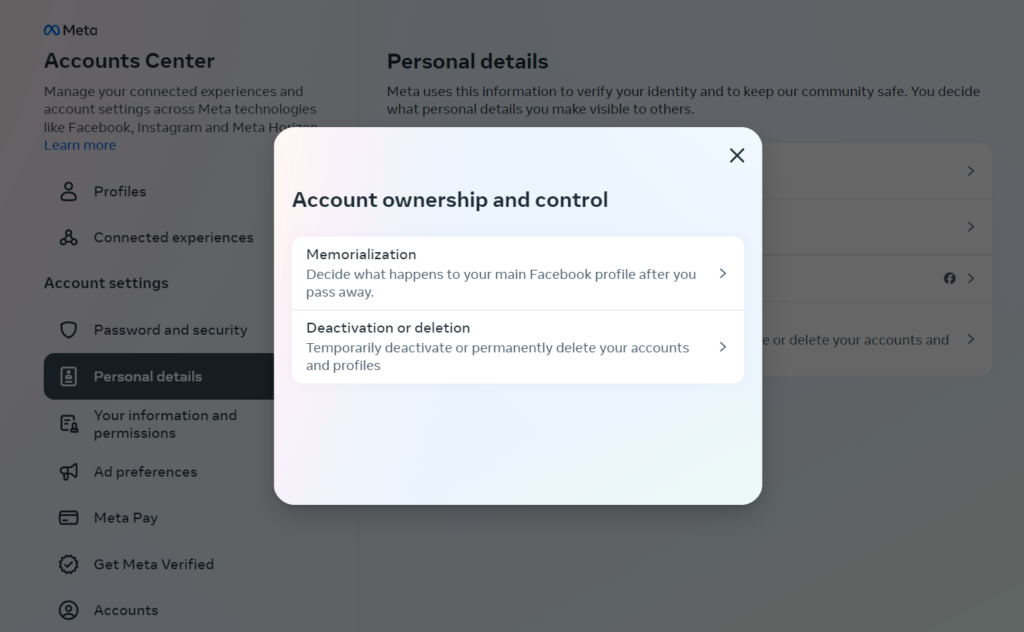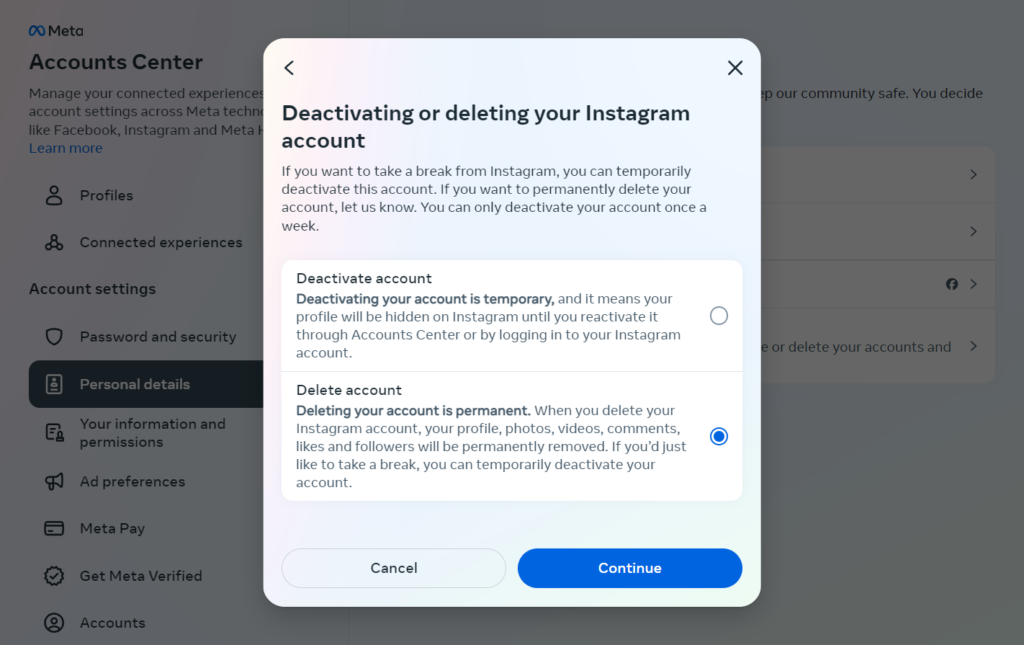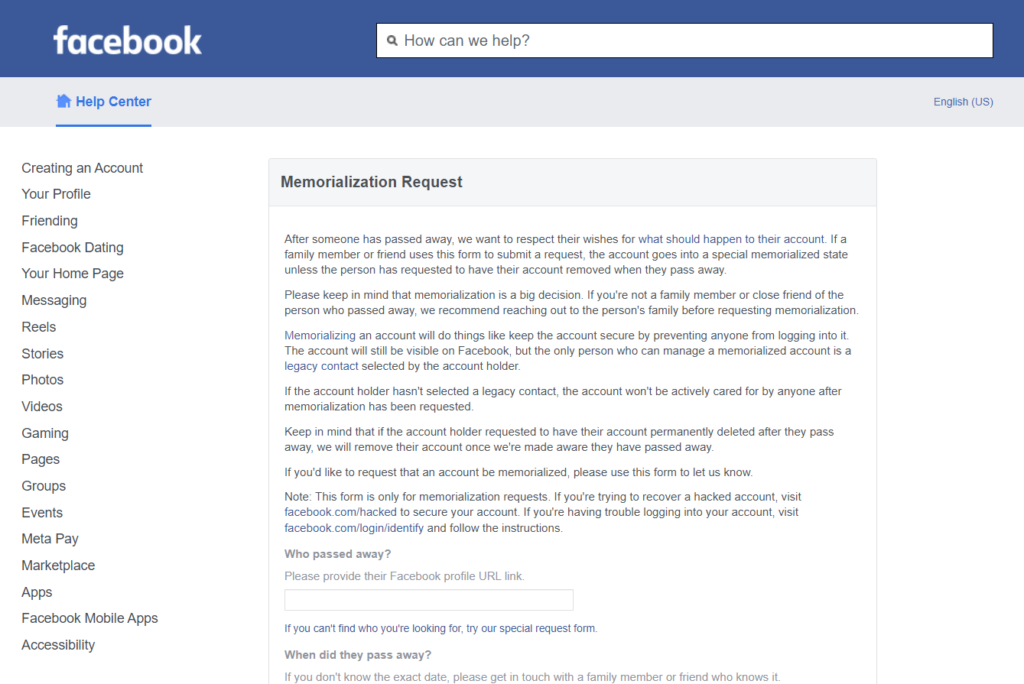
A Comprehensive Guide to Managing Your Facebook Presence: Deactivation, Deletion, and Memorialization
In the vast expanse of the internet, our lives intertwine with a myriad of digital platforms, with Facebook being among the most prominent for billions globally. However, there are moments when either a respite from the digital chatter becomes necessary, a permanent disconnection feels right, or the responsibility falls upon us to manage the digital footprint of a loved one who has passed. This guide will walk you through the steps for deactivating and deleting your account, along with how to handle a Facebook account after someone has passed away., ensuring that you are equipped with the knowledge to make informed decisions regarding your digital legacy.
Step Away Without Stepping Out Forever: How to Deactivate Your Facebook Account
Deactivation offers a reversible escape from Facebook, hiding your profile without deleting your data. Ideal for those pondering a break or needing a temporary respite from the social network.
Understanding the Difference: Deactivation vs. Deletion
Deactivating your account is like taking a vacation from Facebook. Your profile and information are hidden from others, and you cannot use Facebook. However, reactivation is simple – just log back in, and your account springs back to life. All your data remains intact.
Deletion is a permanent goodbye. After a 30-day grace period, your account and information are scrubbed from Facebook’s servers. This includes posts, photos, messages, and even things you’ve liked or commented on.
Here’s a quick comparison table:
| Feature | Deactivation | Deletion |
|---|---|---|
| Account Status | Hidden | Permanently Removed |
| Profile Visibility | Not visible to others | Not accessible |
| Data Retention | Maintained | Removed after 30 days |
| Reactivation | Possible | Not possible |
Taking a Break: How to Deactivate Your Facebook Account
On Desktop or Mobile App:
- Click your profile picture in the top right corner of Facebook.
- Select Settings & Privacy, then click Settings.
- Click Accounts Center at the top left of your screen.
- Click Personal details, under Account Settings.
- Select Account ownership and control.
- Click Deactivation or deletion.
- Choose the account or profile you want to deactivate.
- Select Deactivate account.
- Click Continue then follow the instructions to confirm.

Deactivating freezes your Facebook life, making your profile and most associated content invisible to others. Key exceptions include messages you’ve sent, which remain accessible.
Saying Goodbye Forever: How to Permanently Delete Your Facebook Account
Important Note: Before deleting your account, consider downloading your Facebook data, which includes posts, photos, and messages. You can do this through Settings & Privacy > Your Facebook Information > Download Your Information.
Facebook no longer offers a direct “Delete Account” option. Instead, you’ll initiate a deactivation process that leads to permanent deletion after 30 days.
On Desktop or Mobile App:
- Click your profile picture in the top right corner of Facebook.
- Select Settings & Privacy, then click Settings.
- Click Accounts Center at the top left of your screen.
- Click Personal details, under Account Settings.
- Select Account ownership and control.
- Click Deactivation or deletion.
- Choose the account or profile you want to delete.
- Select Delete account.
- Click Continue then follow the instructions to confirm.

Following these steps will begin the deactivation process. Your account will be inaccessible for 30 days. During this time, you can reactivate it by logging back in. After 30 days, your account and all associated information will be permanently deleted from Facebook.
Remembering Loved Ones: How to Delete or Memorialize a Facebook Account for Others
If someone you know has passed away, you can request Facebook to memorialize or delete their account.
- Memorialization: This transforms the profile into a tribute page where friends and family can share memories. To request, visit https://www.facebook.com/help/contact/234739086860192 and fill out the form. You’ll need proof of death, such as an obituary.
- Deletion: Similar to deleting your own account, this permanently removes the profile. Due to privacy concerns, Facebook typically requires a close family member to submit a request with proof of death.

Remember: Facebook may take time to process these requests.
Beyond Deactivation and Deletion: A Few More Considerations
Managing your presence on Facebook—or that of someone who has passed—requires careful consideration beyond the immediate steps to deactivate or delete:
- Think About the Digital Legacy: Before making a decision, consider what you would like your digital legacy to be. Downloading your data before deletion may preserve memories worth holding onto.
- Understand the Impact: Deletion is irreversible. It’s wise to inform close friends or family of your decision to deactivate or delete your account to avoid misunderstandings.
- Consider Linked Services: Many use their Facebook account to log into other websites and apps. Ensure alternative login methods for these services if you decide to delete your Facebook account.
- The Role of Loved Ones: Memorialization respects the individual’s digital life posthumously, offering a space for friends and family to reminisce. However, choosing to delete should equally be respected as fulfilling the deceased’s possible wishes or privacy concerns.
Facebook, with its vast network, plays a significant role in our digital and social lives. Whether choosing to take a break, leave for good, or manage a loved one’s digital legacy, these steps offer guidance towards making the best decision for your online presence. Remember, each choice regarding our digital selves carries weight in both the virtual and real world, demanding thoughtful consideration for the legacy we wish to leave behind.
Taking Control of Your Digital Footprint
Deactivating or deleting your Facebook account is a personal decision. This guide empowers you to manage your online presence. By following these steps, you can take a break or permanently remove yourself from the platform, ensuring control over your data and privacy.
Beyond Facebook: Remember, this guide focuses on Facebook, but many social media platforms offer similar deactivation and deletion options.



